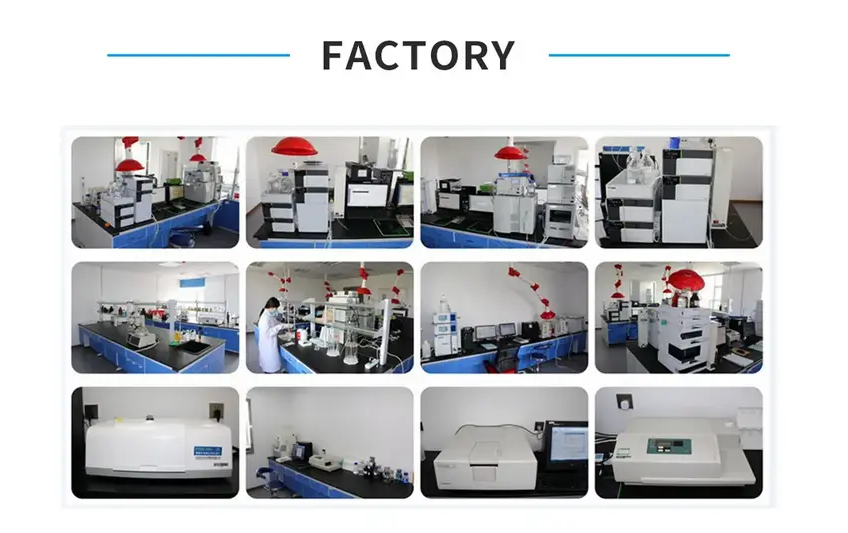Tadalafil is a PDE5 inhibitor with an IC50 value of 1.8 nM.IC50 Value:
1.8±0.4nM [1]Target: PDE 5Tadalafil is marketed in pill form for
treating erectile dysfunction(ED) under the name Cialis, and under the
name Adcirca for the treatment of pulmonary arterial hypertension.
Tadalafil can elevate the level of cGMP in the corpus cavernosum and
effectively improve ED of various causes and degrees.in vitro:
Biochemical potencies (affinities) of these compounds for PDE5
determined by IC(50), K(D) (isotherm), K(D) (dissociation rate), and
K(D) ((1/2) EC(50)), respectively, were the following: sildenafil (3.7
+/- 1.4, 4.8 +/- 0.80, 3.7 +/- 0.29, and 11.7 +/- 0.70 nM), tadalafil
(1.8 +/- 0.40, 2.4 +/- 0.60, 1.9 +/- 0.37, and 2.7 +/- 0.25 nM); and
vardenafil (0.091 +/- 0.031, 0.38 +/- 0.07, 0.27 +/- 0.01, and 0.42 +/-
0.10 nM). Thus, absolute potency values were similar for each inhibitor,
and relative potencies were vardenafil >> tadalafil >
sildenafil [1]. 0.5 ml tadalafil solutions with different concentrations
were added (0.2, 0.1, 0.05 and 0.025 μg ml-1, respectively) into semen
samples. In both groups, samples treated with 0.2 μg ml-1 tadalafil had
significant increase in sperm motility after 2 h incubation [2].in vivo:
The Tadalafil-treated group showed enhanced erectile function
(intracavernosal pressure/mean arterial pressure) at 0.3, 0.5, 1, 3, and
5 Hz compared with diabetic group values at the respective frequencies
(P <.05) that approached control values [3]. oral administration of
tadalafil (20 mg) or sildenafil (100 mg) was given. In both groups,
computer-assisted semen analysis parameters showed no significant
difference. After the administration of tadalafil (2 h) and sildenafil
(1 h), there was no significant difference observed in premature
acrosome reaction incidence rate [2].Clinical trial: Study the Safety
and Effectiveness of Tadalafil in Men With Problems Getting or
Maintaining an Erection When Taken Prior to Desiring an Erection. Phase 3
| Density |
1.5±0.1 g/cm3 |
|---|
| Boiling Point |
679.1±55.0 °C at 760 mmHg |
| Melting Point |
298-300ºC |
| Molecular Formula |
C22H19N3O4 |
| Molecular Weight |
389.404 |
| Flash Point |
364.5±31.5 °C |
| Exact Mass |
389.137543 |
| PSA |
74.87000 |
| LogP |
1.43 |
| Vapour Pressure |
0.0±2.1 mmHg at 25°C |
| Index of Refraction |
1.758 |
| Storage condition |
Hygroscopic, -20?C Freezer, Under Inert Atmosphere |
| lvent |
In Vitro: DMSO : ≥ 52 mg/mL (133.54 mM) * "≥" means soluble, but saturation unknown.
|
|---|
| Solubility |
1 mM2.5681 mL12.8403 mL25.6805 mL5 mM0.5136 mL2.5681 mL5.1361 mL10 mM0.2568 mL1.2840 mL2.5681 mL
|
| Storage |
Powder-20°C3 years 4°C2 yearsIn solvent-80°C6 months -20°C1 month
|
| Shipping |
Room temperature in continental US; may vary elsewhere
|
| SMILES |
O=C([C@@]1([H])CC2=C([C@@H](C3=CC=C(OCO4)C4=C3)N15)NC6=C2C=CC=C6)N(C)CC5=O |
Safety Information
| Symbol |


GHS02, GHS07
|
| Signal Word |
Danger |
| Hazard Statements |
H225-H302 + H312 + H332-H319
|
| Precautionary Statements |
P210-P261-P302 + P352 + P312-P304 + P340 + P312-P337 + P313-P403 + P235
|
| Hazard Codes |
F,Xn
|
| Risk Phrases |
11-20/21/22-36
|
| Safety Phrases |
16-36/37
|
| RIDADR |
UN 1648 3 / PGII |




 China
China








